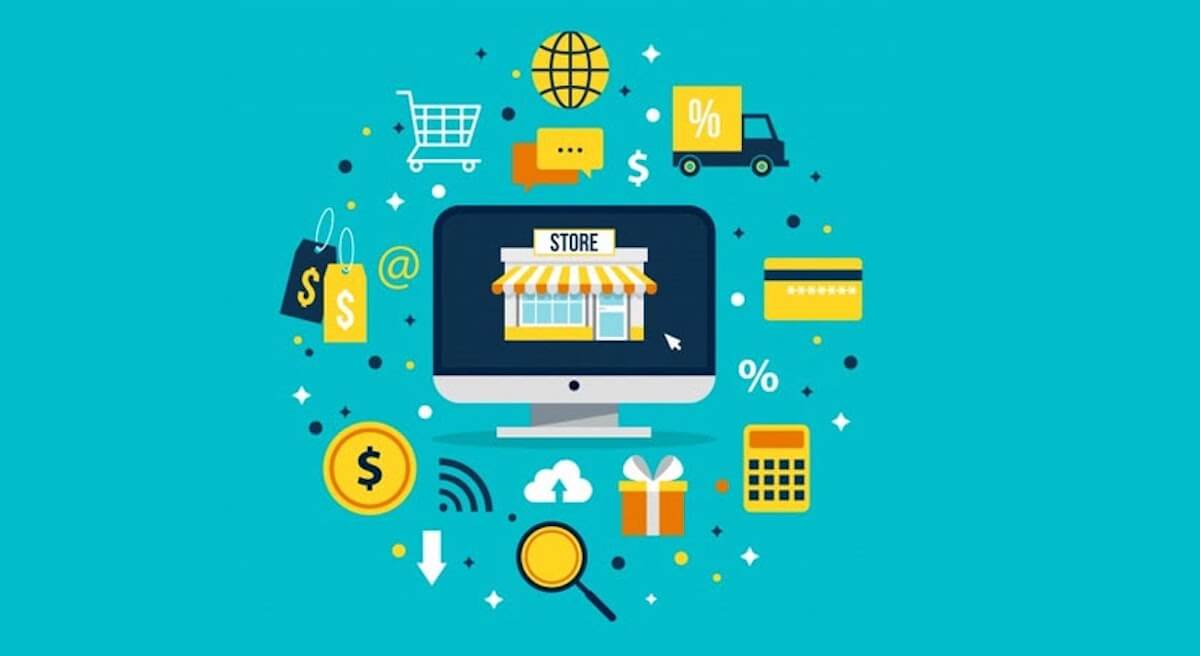
81% of businesses rely on email as their primary customer acquisition channel. This isn’t an overstatement considering that 42.3% of Americans subscribe to email lists for the sole purpose of receiving discounts. Don't take this the wrong way—customers engage emails for a number of other reasons too. Regardless of how people feel about email communications, many email campaigns fail to connect with customers. Figuring out a way to keep people engaged when every other company is trying to do the same can be intimidating. However, it doesn’t have to be.
The key to being successful at email marketing is to keep your customers at the center of all your efforts and send high-level and relevant content that they will look forward to hearing about. We recommend that our clients ask themselves the following questions prior to sending out email campaigns to ensure maximum email engagement:
- Do we have an effective email list growth strategy?
- Do we have an up-to-date email segmentation strategy?
- What kind of content do we share with our customers?
- How do we make our emails more exciting?
You might already have an existing email marketing strategy and a fairly good email engagement score. But don’t get too comfortable—the new generation of shoppers are constantly evolving and becoming more sophisticated about how they consume content. You need to constantly sharpen your email marketing efforts to better connect with your audience and increase engagement.
Introduction to Email Engagement and Common Email Engagement Metrics
Email engagement measures the extent to which your subscribers interact with your email. For instance, do they:
- Open the message?
- Read the copy?
- Click on the links?
- Follow the call-to-action?
- Fulfill the conversion goals?
Tracking email engagement metrics is imperative because it facilitates future design and content decisions that can lead to more focused and effective email marketing campaigns. Here are some common email metrics that every email marketer should know, monitor, and track:
Email Open Rate
Open rate shows the number of emails opened compared to the total amount of emails delivered. Opens are just a basic metric when it comes to email engagement, so you don’t want to use them as the only measure of an email’s success.
How to calculate it: (Emails opened / Emails delivered) * 100
Click-Through Rate (CTR)
The number of clicks on the links in an email, divided by the number of emails delivered. If a good open rate is proof of how good the subject line is, the Click-Through Rate is determined by the quality and relevance of an email’s copy, images, and especially calls-to-action.
How to calculate it: (Emails clicked / Emails delivered) * 100
Unique Open Rate and Clicks
As you monitor your email campaign performance, there is a high probability that it includes multiple openings or clicks by the same user. The terms “unique openings” or “unique clicks” are used in such scenarios.
How to calculate it: (Unique clicks or unique openings / Emails delivered) * 100
Bounce Rate
This is the percentage of email addresses that returned an error after the email campaign was sent. These deliverability issues can be either permanent (hard bounces) or transient (soft bounces). Hard bounces occur because of non-existent or invalid email addresses. Soft bounces, on the other hand, happen due to full inboxes or temporary server issues.
How to calculate it: (Returned emails / Sent emails) * 100
Conversion Rate
While all the other metrics we discussed were on-mail KPIs, the conversion rate is a fundamental off-mail KPI that can be measured by integrating email platform data with data from external analytical systems like Google Analytics. Every email that you send must have a clear objective that links to some action you would like users to carry out. The conversion rate measures how effective your message is in regards to your objective.
How to calculate it: (Number of users who have completed the action / Emails delivered) * 100
The list of email engagement metrics doesn’t end here. You might be familiar with several other metrics like click-to-open rate, unsubscribe rate, spam score, etc.—learn more here.
Factors Affecting Your Email Marketing Success
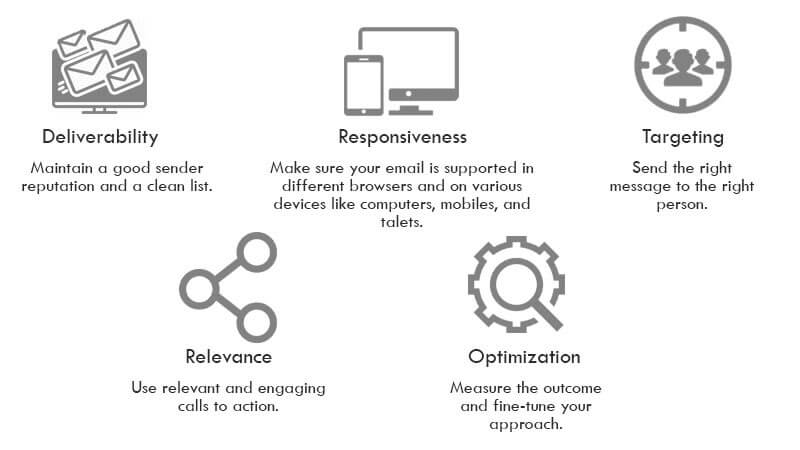
Graphic courtesy of TargetBay
Some Reasons Why Recipients Choose to Leave an Email Unopened
For the past several years, we've helped hundreds of business owners and marketing managers optimize their email marketing efforts. We’ve analyzed thousands of email campaigns and asked a myriad of respondents for the reasons they choose to ignore an email. This is the list of most common reasons that we found:
- The recipient doesn’t recognize the sender.
- The message is not relevant to the recipient.
- The recipient receives too many emails.
- The recipient initially subscribed to a list for a discount and has already received the promised reward.
- The recipient is too busy.
- The recipient doesn’t check his/her email often.
8 Insanely Effective Strategies to Better Email Engagement
Now that you are aware of common reasons why a recipient ignores an email, it’s time to go through suggestions to boost your email open and click-through rates.
1. Enable users to set their preferences
Minimizing the unsubscribe rate and increasing subscriber satisfaction is crucial to improving your email marketing performance. When an email doesn’t satisfy a subscriber’s expectations, their obvious reaction would be to unsubscribe. The solution is straightforward. By asking what their preferences are, you can tailor your email campaigns to meet your subscribers’ needs.
60% of marketers don’t give subscribers an option to choose the types of emails they want to receive, and only 30% of marketers allow their subscribers to decide how frequently they want to receive the emails. That’s where a preference center can help.
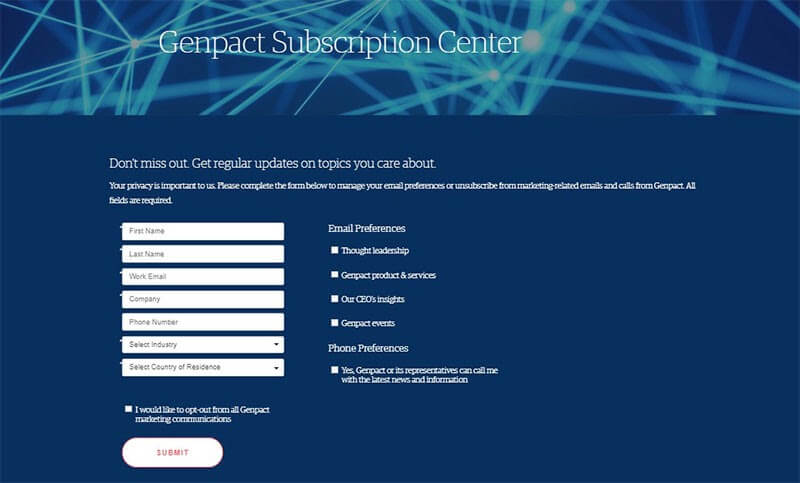
Image Source
Genpact follows a humble preference center practice. While keeping it simple, they ensure that the users can either choose the topics they are interested in or opt out of the service.
Ecommerce retailers can adopt a slightly different approach here. For instance, a clothing retailer can allow its customers to decide whether they want information about women’s clothing or men’s. If subscribers receive relevant emails, they’re more likely to stay engaged with your brand.
2. Segment your email lists
2020 has been a bizarre and difficult year for many businesses, but it looks like things are improving for email marketers. A study has shown that 78% of marketers have seen an increase in email engagement over the last 12 months. Besides that, marketers who used segmented campaigns witnessed as much as a 760% increase in revenue.
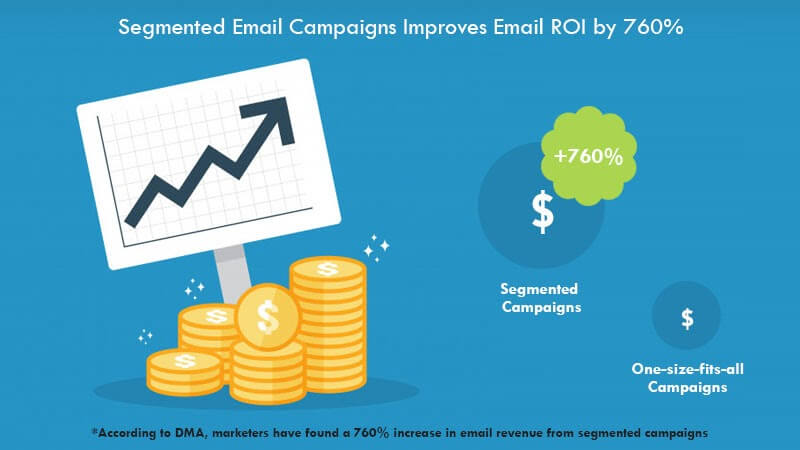
Image Source
If personalization is the key to a high yielding campaign, segmenting email subscribers is the first thing every marketer should do. The rationale is that the information which is relevant to one customer might not be relevant to another. Personalizing emails based on segmented lists will increase the open and click-through rates of your email campaign. Retailers can group their customers based on several attributes, such as geographic location, gender, marital status, profession, age, and interests. With reference to ecommerce email engagement, behavior-based targeting is considered to be more effective.
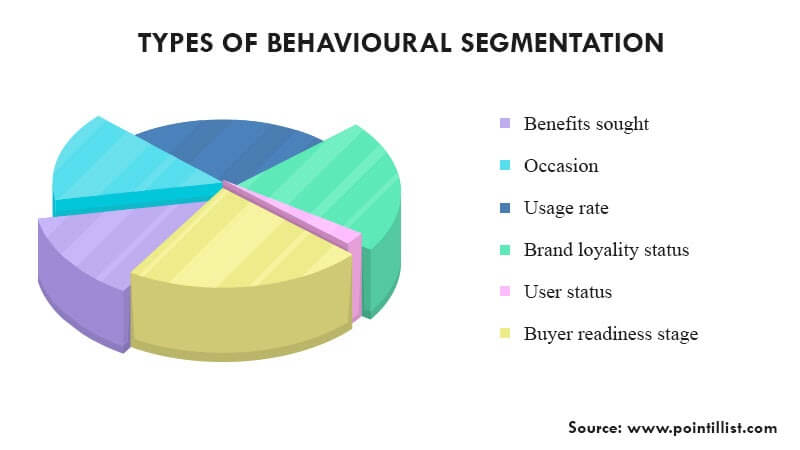
Image Source
To engage the recipients, a marketer must ride the long road of creativity. Sometimes, you will need to be a bit broader with your segments. And in some other cases, you’ll need to adapt your send frequency to specific groups.
After cleaning and sorting the email list, you can start sending out campaigns that are most relevant to each list and their interests. This increases the relevancy of your campaign, which in turn leads to better subscriber satisfaction.
3. Have a Customer-centered Email Subject Line Strategy
Often underrated and overlooked, most of modern marketers spend very little to no effort in streamlining their subject line strategy. Let’s apply the power of observation here. Our inboxes are constantly flooded with personal, professional, and promotional emails each day. In fact, an average person who works 9 to 5 receives 121 emails per day. That being said, it is extremely hard to earn the attention of email recipients. The decision of whether or not to open, skip over, or delete a message is usually made based on the subject lines we see at first glance. According to Invespcro, 47% of email recipients open an email on the basis of the subject line, whereas 69% of email recipients report email as spam based solely on the subject line.
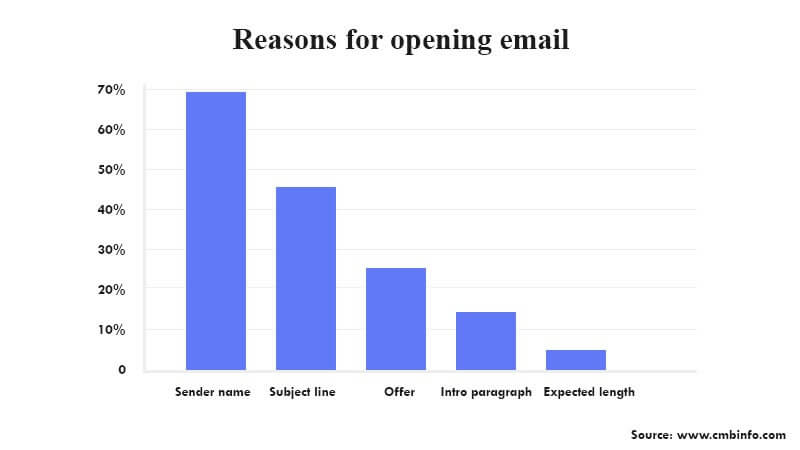
Image Source
In pursuance of the objective—to achieve higher engagement levels—you must invest enough time and effort into creating subject lines that appeal to your readers. High-converting subject lines are short, descriptive, and promising. You can explore different subject line styles here, like informational, personal, clever, how-to, etc.
4. Acknowledge the Impact of Responsive Design
Did you know that 55% of email is now opened on a mobile device? If you haven't optimized your email marketing strategies for mobile yet, you're already late. Creating the appropriate design and optimizing your content for mobile does make a difference. However, a majority of ecommerce brands still believe that building templates that work on all devices (52%) are just enough. This isn't right. Instead of pursuing a “one size fits all” approach, focus on optimizing every aspect of the email if you want to reach the conversion and engagement rates that you are aiming for. This involves writing a brief and relevant copy, resizing pictures, leaving blank spaces around buttons to avoid missed clicks, and more. Here’s an example of a mobile-optimized email:
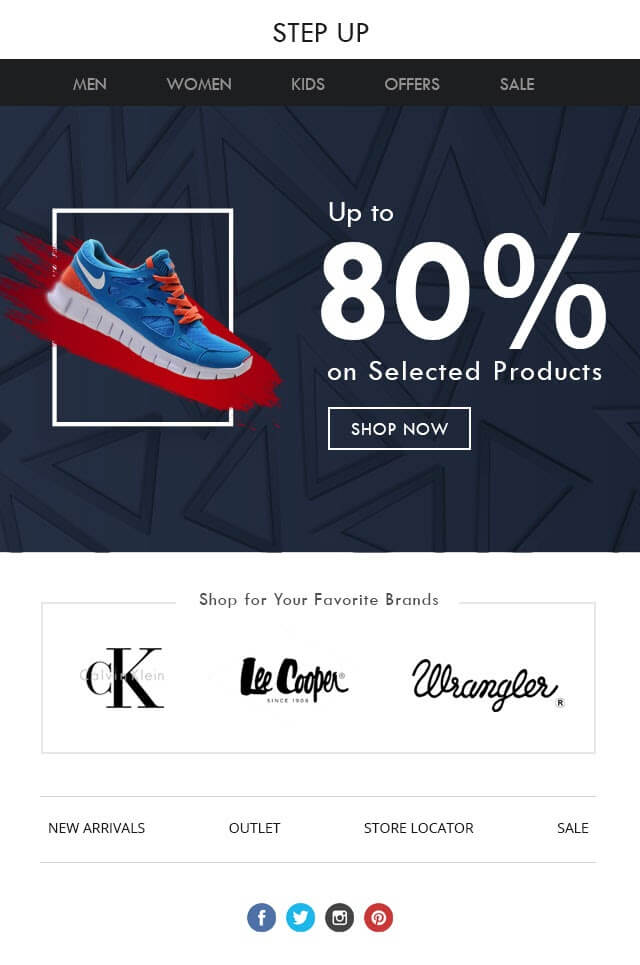
Image courtesy of TargetBay
As stated in Yes Marketing’s overview of Q1 benchmarks, responsive emails have a 21% higher CTO (click to open rate) than non-responsive ones.
5. Personalize Your Emails
Personalization, in the context of email marketing, is about targeting a specific subscriber and sending a tailored email campaign by leveraging the data and information you have gathered. Basic email personalization techniques involve addressing the recipient by their first name in the subject line, while advanced tactics include creating email content based on the subscriber's gender, location, or other things you know about them. Does personalization in email marketing increase email engagement? 74% of marketers say that they’ve seen significant improvement in customer engagement when employed targeted personalization. Personalization is proven effective that it can increase your open rate by 29%.
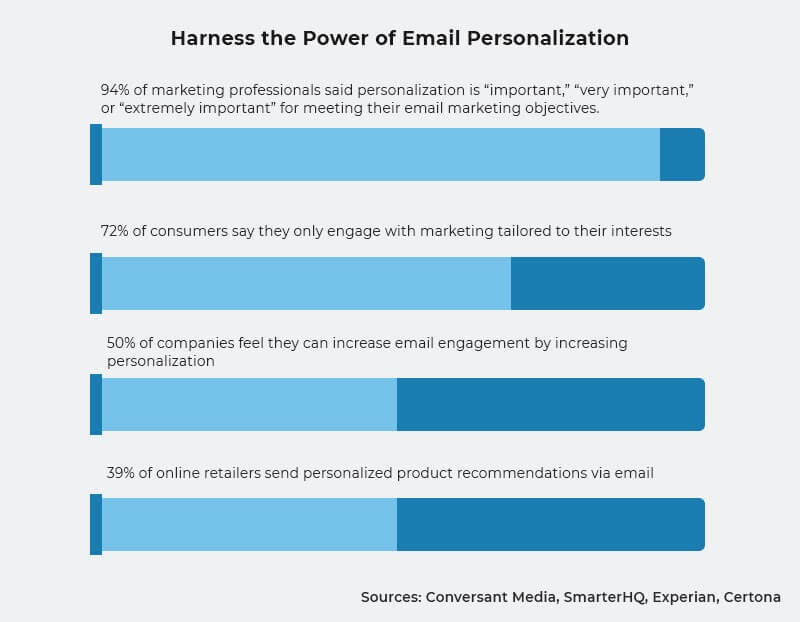
Image Source [1] [2] [3] [4]
Consumers nowadays are highly informed and more likely to interact with a brand that offers personalized experiences. People want to be seen and considered as individuals rather than a group of similar traits. So, where and how do you begin with personalization? It’s entirely possible to start simple. Begin with the subject line and preheader, and advance with more sophisticated tactics as you go along. The aim is to use personalization to bring value to your customers’ experiences.
6. Use Social Proof to Fuel Engagement
Social proof implies one of the hottest marketing buzzwords—perhaps the most debated strategy nowadays. Whether it’s preventing us from choosing a product that has less than 5 reviews or compelling us to take part in a social media trend like “10-year challenge,” social proof exerts a powerful influence on us.
The effect of social proof is more evident in ecommerce. When making a purchase, new-gen shoppers look for genuine positive as well as negative reviews to ensure the credibility of the product. If this is an event of leveraging social proof in your ecommerce store to foster credibility, using brief customer reviews in marketing emails are equally or more useful. Incorporating customer reviews into your emails will help build trust in the product/brand, and also promote the engagement factor. An abandoned cart email is the epitome of how rewarding social proof is in a transactional email. Here’s an example:
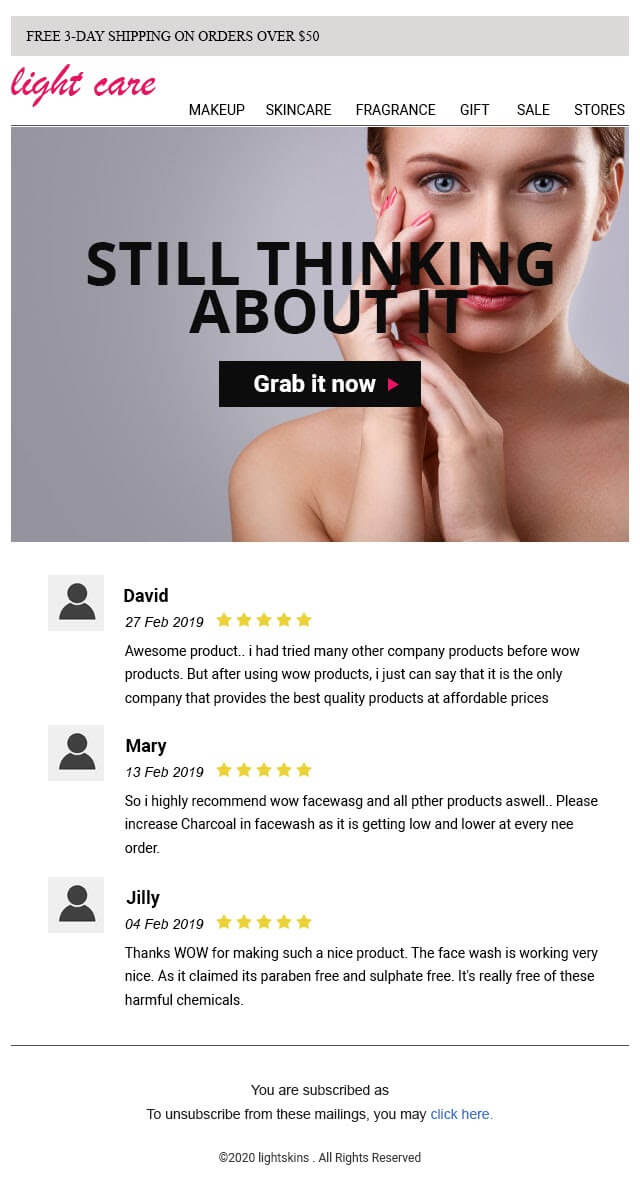
Image courtesy of TargetBay
Whether you choose to believe it or not, we, humans are social animals; we crave a sense of belonging. Consequently, our decisions are consciously or subconsciously influenced by the choices, opinions, and actions of those around us.
7. Offer Incentives
Let's face it: getting people—a lot of people—to actually interact with your email campaign isn’t easy. This is exactly why it is crucial to understand that the three main reasons people will join your email list are discounts, exclusive information, and to stay in touch. Out of these three reasons, discounts would be the apparent reason why a customer opens an email. As stated in a study conducted by Voucher Cloud, 7 out of 10 shoppers said they made use of a coupon or discount from an email recently.
- Help first-time conversions: First-time shoppers are often uncertain and confused. They take a lot of factors into consideration before making a purchase decision. They might examine the trust signals, payment security factors, or even peer reviews. Providing a special discount or a first-time offer is a great way to help them overcome their hesitations and instill confidence to proceed with the transaction.
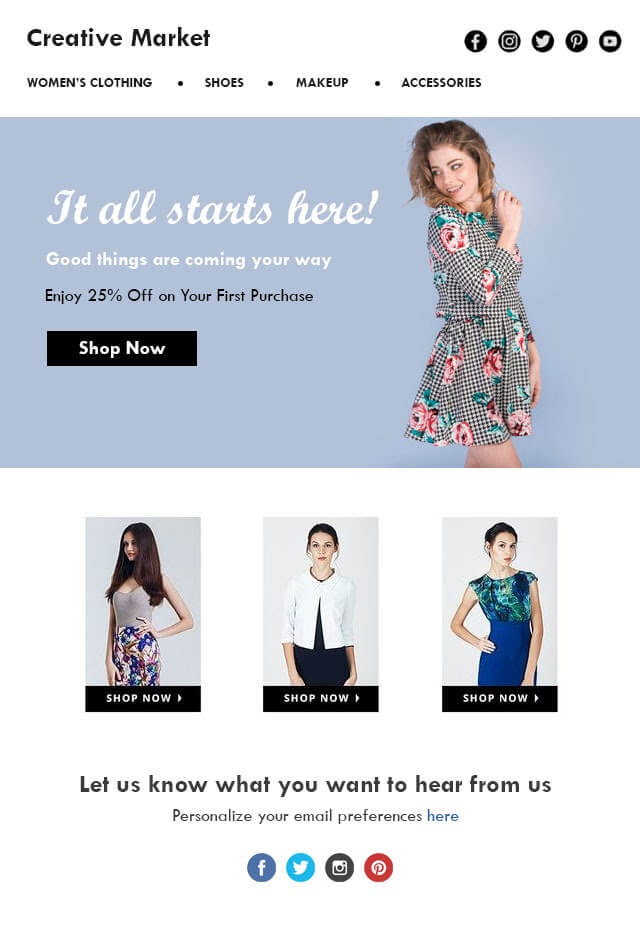
Image courtesy of TargetBay
- Re-engage inactive recipients: Most online retailers and marketers are interested in communicating with active subscribers. But, what about hundreds of inactive recipients in your email database? Offering incentives is an excellent option if your intent is to re-engage the previously qualified buyers who had stopped responding to your email campaigns.
When in doubt, discounts aren’t the only way to incentivize. You can offer free samples, webinars, limited one-on-one consulting, a sneak peek at original research, and more.
8. Get the Timing Right
What’s the best time to send an email? Finding the perfect time to send out the email campaign is less about your convenience and more about who you’re emailing, what devices the recipient is using, and what country or time zone they belong to. For instance, in the United States, most recipients check their email in the morning. About 7% of all email opens occur between 10 a.m. and 11 a.m. Most of these opens happen on mobile devices.

Image Source
Now, let’s take a look at the average results of email campaigns sent on different days of the week. To arrive at this conclusion, we relied on data from GetResponse.
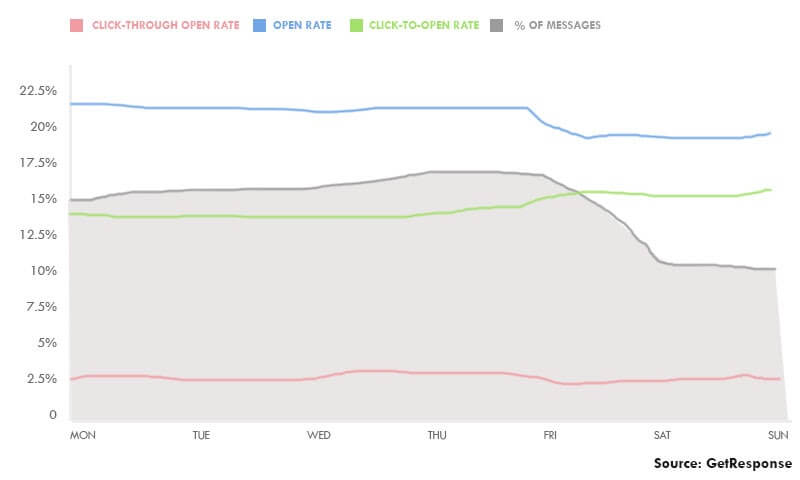
Image Source
Once again, it isn’t wise to generalize when it comes to picking the right time or day to send an email. That’s why it’s better to understand your audience and to find the time slots that work best for you through testing.
Final Thoughts
Customer engagement is a key determinant of how proficient your customer acquisition and retention approaches are. The level of interaction you obtain from your email subscribers plays a substantial role in improving your email conversion rates and overall email marketing ROI. All the work that you put into improving your email marketing engagement will serve no useful purpose if you don’t fully understand who your customers are, what they expect from you, or how you can communicate with them at scale.
As we’ve already pointed out, with the right timing, content, design, personalization—in combination with providing a consistent experience and matching brand personality—you can dismantle the barriers of subscriber engagement.
Once you start applying these ideas, remember to reassess each and every aspect of your approach constantly. Customer journeys and customer profiles are ever-changing variables; as their requirements and preferences change, your content and email engagement strategy should also evolve along with them.











